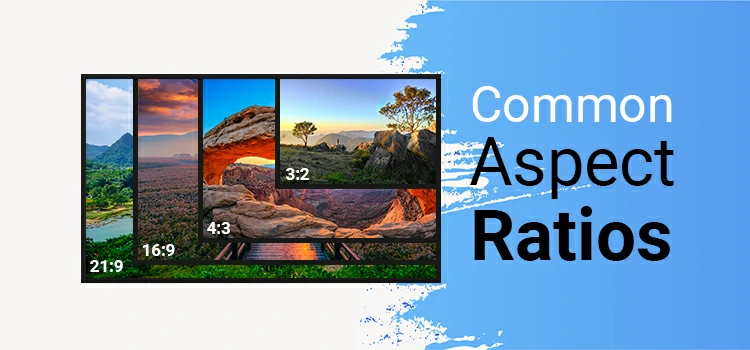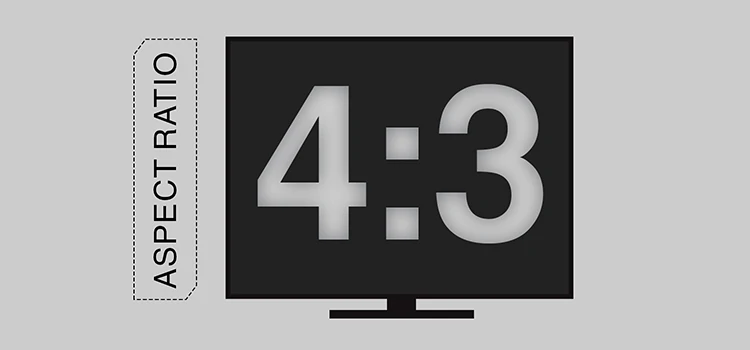White Balance in Photography

Ever take a photo that’s too blue or orange? It’s likely due to incorrect white balance. This setting controls color temperature, making photos look realistic.
Correct white balance makes whites look white and other colors look true. If it’s off, skin tones are odd, the sky turns purple, and photos lose their natural feel.
Learn how to control white balance in camera and during editing. Discover when to adjust it and get simple tips for clean, natural photos that avoid common mistakes.
What Is White Balance?
White balance is a camera setting that ensures accurate colors, especially whites. Our eyes adjust to various light sources, allowing us to see colors correctly. Your camera needs this adjustment too.
Light sources have unique tones. Candlelight is warm and yellow, cloudy skies are cool and blue. White balance tells your camera the light type, helping it adjust colors for a natural look.
Correct white balance makes whites look white, not yellow or blue. It also helps skin tones, skies, and trees look right. If it’s off, your photo may look too warm or cold.
White balance makes your photos’ colors look true and steady, no matter where you are.
Understanding Color Temperature
Color temperature measures light’s warmth or coolness in Kelvin (K). Low numbers mean warm, yellow-orange light. High numbers mean cool, blue light.
Here’s a simple breakdown of common color temperatures:
- 1,000–2,000K – Candlelight: very warm and orange
- 3,000K – Tungsten bulbs: soft yellow glow (indoor lighting)
- 4,000K – Fluorescent lights: slightly cool and neutral
- 5,000–5,500K – Daylight: bright and balanced
- 6,000–6,500K – Cloudy or overcast skies: cooler and bluish
- 7,000K+ – Shade or snowy scenes: very blue and cold
Cameras use this scale to correct photo colors. Indoors under yellow lights, cameras add cool tones. In shady spots, they warm up the image.
Knowing the light source helps you choose the right white balance. With practice, you’ll control how your photos look.
Suggested Article-
Types of White Balance Presets
White balance presets are built-in camera settings designed to match common lighting conditions. Each one adjusts the image color temperature so that whites appear white and colors stay accurate. Let’s dive deeper into each type:
1. Auto White Balance (AWB)
Most cameras default to Auto White Balance (AWB), which adjusts colors automatically. It performs well in evenly lit scenes, but struggles with mixed lighting or vibrant colors.
2. Daylight / Sunny
This preset is ideal for bright sunlight, typically between 5200-5500K. It captures scenes without adding warmth or cool tones, showing them as they appear in sunny daylight. It’s perfect for outdoor photography when the light is strong and consistent.
3. Cloudy
When the sky is overcast, natural light turns cooler and slightly blue. The Cloudy preset warms up the image. This helps restore natural skin tones and warm colors. Many landscape photographers like it too. They prefer richer, warmer tones in dull weather.
4. Shade
Shaded areas are cooler than cloudy ones, often hitting 7000K or more on the Kelvin scale. This preset adds warmth to balance the blue tint. It’s great for portraits taken in the shade or under trees, where skin tones can appear too pale or cool.
5. Tungsten (Incandescent)
This setting is great for indoor lighting with traditional tungsten bulbs. These bulbs emit a warm, yellow-orange hue (about 2800–3200K). The Tungsten preset adds cool blue tones. This balances the scene and stops it from looking too warm. If you’re shooting in a cozy indoor space, it helps keep colors looking natural.
6. Fluorescent
Fluorescent lights can appear greenish or bluish, depending on the bulb type. The Fluorescent preset adds warmth or magenta to balance these color shifts. It’s effective in offices, schools, and stores that often use fluorescent lighting.
7. Flash
Flash photography often results in a slightly cool or bluish tone. The Flash preset warms up the image just enough to restore balance. It’s helpful when using an external or built-in camera flash, especially in low-light environments.
8. Custom White Balance / Kelvin (K)
For full control, use the Custom White Balance setting. This lets you measure light with a white or gray card. You can then set it manually for accurate results. Some cameras also let you choose a specific Kelvin value (like 5600K for daylight or 3200K for tungsten).
Manual White Balance Settings
Sometimes, the lighting in your scene doesn’t match any of your camera’s presets. That’s where manual white balance comes in. It gives you full control to dial in the exact color temperature or let the camera measure it based on a reference point—like a white or gray object.
There are two main ways to set white balance manually:
1. Custom White Balance (Using a White or Gray Card)
This method involves telling your camera, “Hey, this is what pure white looks like in this light.” Here’s how it works:
- Place a white or 18% gray card in the lighting you’ll be shooting in.
- Fill most of the frame with the card and take a photo.
- Go into your camera’s custom white balance setting.
- Select that photo as the reference for your white point.
- Your camera will now use that as the baseline for color correction.
When to use this: Custom white balance is perfect for studio shoots, product photography, and indoor events where lighting doesn’t change. It’s also helpful in mixed-light scenes or environments with unusual lighting (like colored LED lights).
2. Kelvin (K) Temperature Setting
Some cameras allow you to set the exact color temperature in degrees Kelvin. This gives you even more creative control, especially if you already understand how different temperatures affect color.
For example:
- 3200K for warm indoor lighting
- 5000–5500K for daylight
- 6500K+ for cool, shaded conditions
When to use this: Kelvin control is great for experienced photographers, studio setups, or situations where light temperature doesn’t shift much. It’s also a time-saver when you need consistency across multiple shots or cameras.
White Balance in Post-Processing
Even if you didn’t get the white balance perfect in-camera, don’t worry—editing software can fix it. That’s the beauty of shooting in RAW format. RAW files keep all the color data, which means you can adjust white balance later without damaging your image quality.
Here’s how white balance works during editing and how you can make the most of it:
Why Shoot in RAW, Not JPEG
JPEG files compress and bake in the white balance you chose in-camera. This limits how much you can fix later. RAW files, on the other hand, capture the full color range, so you can freely adjust white balance after the shot.
How to Fix White Balance in Lightroom or Photoshop
- Use the White Balance Tool (Eyedropper): Click on something in your image that should be neutral gray or white. The software then adjusts the colors to make that area neutral, and everything else balances out.
- Use the Temperature and Tint Sliders:
- Temperature: Slide left for cooler tones (blue), right for warmer tones (yellow/orange).
- Tint: Adjusts green-magenta balance. Useful in correcting unnatural skin tones or indoor lighting color shifts.
- Compare Before & After: Toggle between your original and edited version to make sure your changes feel natural. Over-correcting can make your photo look fake or flat.
Common Mistakes and How to Avoid Them
Experienced photographers can get white balance wrong. But mistakes are easy to fix. Here are the most common errors and how to avoid them.
1. Relying Too Much on Auto White Balance (AWB)
The Mistake: Trusting your camera to get it right every time.
The Fix: AWB helps, but it’s not perfect—especially in tricky light like sunsets, concerts, or strong color casts. Use a preset or set a custom white balance for better accuracy.
2. Ignoring the Lighting Environment
The Mistake: Shooting under mixed lighting (like daylight + tungsten bulbs) without making adjustments.
The Fix: Be aware of your light sources. If possible, turn off one type of light to keep things consistent. Or shoot in RAW so you can fix the color in post.
3. Forgetting to Adjust White Balance When Moving Locations
The Mistake: Changing scenes (like going from indoors to outdoors) and leaving the white balance on the previous setting.
The Fix: Make it a habit to recheck your white balance every time the lighting changes. One quick glance can save hours in editing.
4. Over-Correcting in Post-Processing
The Mistake: Dragging the temperature and tint sliders too far, making photos look unnatural.
The Fix: Use a reference point—like a white shirt or gray wall—and trust your eyes. Don’t force the image to look “perfect” if it starts feeling off.
5. Not Using a Gray Card or Custom WB in Critical Shoots
The Mistake: Guessing the white balance for product or portrait shoots where color accuracy really matters.
The Fix: Use a gray card or set custom white balance manually to make sure colors—especially skin tones or product colors—stay true.
6. Not Shooting in RAW
The Mistake: Using JPEG limits your editing options.
The Fix: Always shoot in RAW for complete control over white balance in post-processing.
Pro Tips for Getting White Balance Right
Master color and mood with correct white balance. Pro tips for cleaner, natural-looking results in portraits, landscapes, and products.
1. Always Shoot in RAW
RAW files keep all your color data intact. Even if your white balance is off during the shoot, you’ll have full flexibility to adjust it later without ruining your image quality. JPEG is fine for quick sharing—but RAW is your best friend for serious editing.
2. Use a Gray Card for Accurate Results
When color accuracy matters—such as in product photography or skin tones—a gray card is helpful. First, take a shot with the gray card under your lighting. Then, use that shot as a reference for custom white balance in your camera or during editing.
3. Understand the Light Around You
Before clicking the shutter, take a second to observe your light source. Is it warm indoor light? Cool shade? A mix of both? Adjust your white balance setting (or use Kelvin mode) to suit the scene. Being mindful of your environment gives you an instant edge.
4. Use Presets as a Starting Point, Not the Final Answer
Presets like “Daylight” and “Cloudy” can help, but they aren’t perfect. Use them to get close. Then, adjust the look in-camera with Kelvin or in post-processing to match your desired tone.
5. Bracket for White Balance (When in Doubt)
If you’re unsure about the correct white balance, take multiple shots with different settings. This gives you a few options to work with later—and helps you train your eye for spotting color shifts.
6. Monitor Your Histogram
A well-balanced histogram can reveal subtle color shifts. If your image looks too warm or cool, the histogram might show a color channel imbalance. Use it as a guide for more precise white balance control.
7. Use White Balance Creatively
White balance isn’t just technical—it can be artistic, too. Want to make a winter photo feel colder? Shift the balance toward blue. Want a sunset to glow even more? Warm it up. Once you understand how it works, you can use it as a creative tool.
To Conclude
White balance makes a big difference in your photos. When you get it right, your images look natural, and colors stay true.
Control white balance before and after taking a shot, considering your lighting. Practice helps, so experiment with settings and environments, shoot in RAW, and tweak until you get the look you want.







